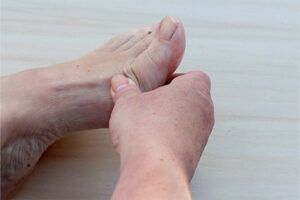Dermatology
Plaque Psoriasis
Challenges in the Management of Genital Psoriasis
A substantial proportion of patients with plaque psoriasis experience genital lesions at some point in their disease course. Managing genital psoriasis can be especially challenging for patients and requires special consideration by practitioners. Registry data from the Maui Derm Hawaii 2024 meeting offer clinical insight into this patient population.
Following this presentation, featured expert Bruce E. Strober, MD, PhD, was interviewed by Conference Reporter Medical Writer Rick Davis. Dr Strober’s clinical perspectives on this topic are presented here.
Health care providers should always query their patients with psoriasis about the presence of genital lesions. While not all patients with psoriasis have genital symptoms, I would estimate that a large percentage will experience genital psoriasis as part of their psoriasis presentation at some point in their lifetime. At any given snapshot in time, that number might be approximately 15%.
Most patients do not need a biologic if their sole issue is genital psoriasis; they can usually be treated with topical therapy. Some providers like to use topical steroids, and a low-strength topical steroid may be sufficient. Personally, I am moving away from using topical steroids given the availability of nonsteroidal topical alternatives.
Previously, my bias was toward using the topical calcineurin inhibitors pimecrolimus and tacrolimus. I found them to be very effective for both genital psoriasis and inverse psoriasis. The only issue with using these treatments is that some patients experience burning and stinging. In the past 2 years, we have seen the US Food and Drug Administration (FDA) approval of 2 once-daily nonsteroidal topical creams: tapinarof and roflumilast. They represent significant advances because we have studies indicating that a significant number of patients show clear or almost clear skin responses with their use. If you can deliver these drugs to the patient through their commercial insurance, this is really an excellent, very effective approach to nonsteroidal therapy for psoriasis. Plus, there is no need to worry about the side effects of topical steroids, such as atrophy and telangiectasia. This is a huge breakthrough compared with the older approaches.
If genital psoriasis appears in the context of more widespread psoriasis elsewhere on the body, then using a biologic for the widespread psoriasis often results in the clearance of the genital psoriasis and you do not need to add topicals. That is the beauty of biologic systemic therapy. Apremilast also has data for its use specifically in the genital area. So, we have a lot of choices for systemic-appropriate therapies when the patient has psoriasis on other parts of the body. In the event of a patient having genital psoriasis that does not respond to any topical therapy for some reason, then you might employ a systemic approach. But, as I mentioned previously, topical failure is less common in the genital area.
At the Maui Derm Hawaii 2024 program, my colleagues and I presented data from the CorEvitas Psoriasis Registry of systemic-appropriate patients with psoriasis, which included individuals with genital psoriasis. Genital psoriasis affects an area of the body that requires special consideration. It may range in prevalence depending on the population, but, like palmoplantar or nail psoriasis, the presence of genital psoriasis in and of itself is justification for systemic therapy if topicals fail or if the quality-of-life impacts are really challenging for the patient.
Egeberg A, See K, Garrelts A, Burge R. Epidemiology of psoriasis in hard-to-treat body locations: data from the Danish skin cohort. BMC Dermatol. 2020;20(1):3. doi:10.1186/s12895-020-00099-7
Hong JJ, Mosca ML, Hadeler EK, Brownstone ND, Bhutani T, Liao WJ. Genital and inverse/intertriginous psoriasis: an updated review of therapies and recommendations for practical management. Dermatol Ther (Heidelb). 2021;11(3):833-844. doi:10.1007/s13555-021-00536-6
Lebwohl MG, Kircik LH, Moore AY, et al. Effect of roflumilast cream vs vehicle cream on chronic plaque psoriasis: the DERMIS-1 and DERMIS-2 randomized clinical trials. JAMA. 2022;328(11):1073-1084. doi:10.1001/jama.2022.15632
Lebwohl MG, Stein Gold L, Strober B, et al. Phase 3 trials of tapinarof cream for plaque psoriasis. N Engl J Med. 2021;385(24):2219-2229. doi:10.1056/NEJMoa2103629
Merola JF, Parish LC, Guenther L, et al. Efficacy and safety of apremilast in patients with moderate-to-severe genital psoriasis: results from DISCREET, a phase 3 randomized, double-blind, placebo-controlled trial. J Am Acad Dermatol. 2024;90(3):485-493. doi:10.1016/j.jaad.2023.10.020
Mrowietz U, Barker J, Conrad C, et al. Efficacy and safety of apremilast in patients with limited skin involvement, plaque psoriasis in special areas and impaired quality of life: results from the EMBRACE randomized trial. J Eur Acad Dermatol Venereol. 2023;37(2):348-355. doi:10.1111/jdv.18689
Prieto K, Duong JQ, Feldman SR. Tapinarof cream for the topical treatment of plaque psoriasis in adults. Expert Rev Clin Immunol. doi:10.1080/1744666X.2023.2296607
Strober B, Patel M, Photowala H, et al. Real-world achievement of skin clearance targets and improved quality of life with risankizumab in patients with moderate psoriasis: 1-year results from the CorEvitas Psoriasis Registry. Poster presented at: Maui Derm Hawaii 2024; January 22-26, 2024; Wailea, HI.
This information is brought to you by Engage Health Media and is not sponsored, endorsed, or accredited by Maui Derm Hawaii 2024.











